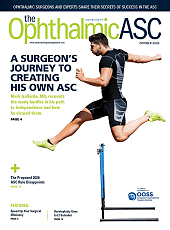Aurion Biotech announced positive 12-month results from the company’s phase 1/2 CLARA trial, which evaluated the safety, efficacy and tolerability of AURN001 (neltependocel [human corneal endothelial cells] in combination with Y-27632 rho-kinase inhibitor) in patients with corneal edema secondary to corneal endothelial dysfunction. The findings were presented at Cornea Day during the annual meeting of the American Academy of Ophthalmology (AAO) in Orlando, Florida, the company said in a press release.
In this phase 1/2 double-masked, parallel-arm, dose-ranging study, patients treated with a single dose of AURN001 corneal endothelial cell (CEC) therapy demonstrated a clear dose-dependent response, with the greatest efficacy observed in the high-dose group, the company said. At 12 months, 65% of subjects in the high-dose AURN001 group vs 0% of the Y-27632 group achieved a ≥15-letter best corrected visual acuity (BCVA) gain (p<0.0001). Also, in the high-dose group, the mean change in BCVA from baseline was 12.5 letters, mean reduction in central corneal thickness (CCT) was 23.2 µm, and responders’ visual acuity improved from 60 to 81 letters (20/60 to 20/25, Snellen equivalent). A dose-dependent improvement was also demonstrated in patient-reported outcomes (VFQ-25), with subjects in the high-dose group reporting the most pronounced gains in quality-of-life measures.
In the United States, Aurion Biotech has obtained both Regenerative Medicine Advanced Therapy (RMAT) and Breakthrough Therapy Designation (BTD) for AURN001 for its potential to treat corneal endothelial disease. Subject to manufacturing specifications and quality controls, each qualified donor line may yield up to 1,000 therapeutic doses, the company said.
According to the company, 97 patients were enrolled at 20 sites across the United States and Canada. Patients were randomized to AURN001 high, medium, or low dose; CECs alone, or Y-27632 alone. The primary endpoint was the proportion of patients with a ≥15-letter improvement from baseline in BCVA at 6 months. Secondary endpoints were change from baseline in BCVA and CCT. The score on the VFQ-25 patient questionnaire was an exploratory endpoint. Rates of AEs, graft rejection, and rescue were recorded.








